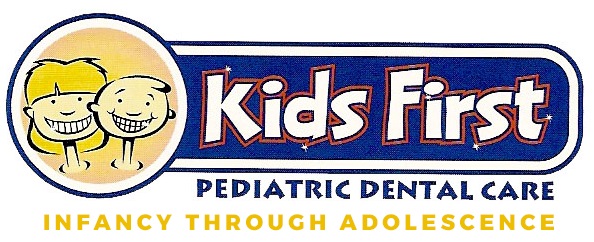Dental issues in children are not uncommon, but many of them can be prevented with proper care and attention. In this blog post, we’ll explore some common dental problems that children may face and discuss effective preventive measures.
Tooth Decay: A Widespread Concern for Kids
Tooth decay, also known as cavities or dental caries, is one of the most common dental issues in children. In fact, tooth decay is the #1 most common chronic disease among kids! It occurs when bacteria in the mouth produce acids that erode the tooth enamel over time. Poor oral hygiene, excessive sugar consumption, and irregular dental check-ups, among other factors, contribute to the development of cavities in children.
Prevention Strategies for Tooth Decay
Regular, preventive oral health care is the best way to avoid potential problems down the road. Consider these tips to keep your child’s oral health — and overall health — in good shape:
- Regular Brushing and Flossing: Encourage your child to brush their teeth twice a day (two minutes each time) with fluoride toothpaste. They should also floss once a day to remove plaque and prevent the formation of cavities.
- Balanced Diet: Limit sugary snacks and drinks, as sugar feeds the bacteria that cause tooth decay. Instead, promote a balanced diet rich in fruits, vegetables, and dairy products.
- Fluoride Treatment: Consult with your child’s dentist about the possibility of fluoride treatments. Fluoride strengthens tooth enamel, making it more resistant to acid attacks.
- Regular Dental Check-ups: Schedule regular dental check-ups for your child, even if they don’t currently have any dental issues. Early detection and intervention can prevent the progression of tooth decay. The American Academy of Pediatric Dentististry (AAPD) recommends that children have their first dental exam within six months of their first tooth emerging, or by age one.
Gum Disease in Children
While gum disease is commonly associated with adults, children can also experience various forms of gum problems. Gingivitis, the earliest stage of gum disease, is characterized by red, swollen gums that may bleed during brushing.
How to Prevent Gum Disease in Children
Preventing gum disease among kids comes down to instilling regular, healthy habits. These include:
- Proper Oral Hygiene: Instruct your child on proper brushing techniques, emphasizing the importance of cleaning the gum line. Use a soft-bristled toothbrush to avoid damaging sensitive gum tissue.
- Regular Dental Check-ups: Routine dental visits allow the dentist to monitor the health of your child’s gums. Early detection of gum issues can prevent the development of more severe conditions.
- Healthy Eating Habits: A diet rich in vitamins and minerals contributes to gum health. Ensure your child consumes foods high in vitamin C, which plays a crucial role in gum tissue health.
- Avoid Tobacco Exposure: Secondhand smoke can increase the risk of gum disease in children. Ensure a smoke-free environment to protect both oral and overall health.
Malocclusion (Misaligned Teeth)
Malocclusion refers to the misalignment of teeth, causing issues with the bite. Common types include overbite, underbite, and crossbite. Malocclusion can result from genetics, thumb-sucking habits, or injury to the jaw.
Corrective Measures for Malocclusion
Misaligned teeth are relatively common among children. Don’t worry — there are many options for addressing, or even preventing, malocclusion:
- Orthodontic Evaluation: Schedule an orthodontic evaluation for your child around the age of 7. Early detection allows for timely intervention if malocclusion issues are identified by your pediatric dentist.
- Thumb-Sucking Intervention: If your child has a thumb-sucking habit, take steps to curb it early on, as prolonged thumb-sucking can contribute to misaligned teeth.
- Orthodontic Treatment Options: Depending on the severity of malocclusion, orthodontic treatments such as braces or aligners may be recommended. Discuss available options with your child’s pediatric dentist or orthodontist.
- Regular Dental Check-ups: Routine dental visits enable the dentist to monitor the development of your child’s teeth and identify potential malocclusion issues.
Dental Trauma
Accidents involving the mouth can lead to dental trauma, including chipped, broken, or knocked-out teeth. Common causes include falls, sports injuries, or other unexpected incidents.
If your child has suffered dental trauma, take immediate steps to protect their safety and health:
Immediate Steps for Dental Trauma
- Contact Emergency Services: In cases of severe dental trauma, contact emergency services immediately. Quick action can make a significant difference in saving a knocked-out tooth.
- Preserve Knocked-Out Tooth: If a tooth is knocked out, handle it carefully by the crown (the big, top part of the tooth), rinse it gently, and place it back into the socket if possible. If that’s not possible, store it in milk or a tooth preservation kit while seeking emergency dental care.
- Manage Pain and Swelling: Use a cold compress on the affected area to reduce pain and swelling. Over-the-counter pain relievers may also be used as directed.
- Follow-up with a Dentist: Even if the immediate situation is under control, seek professional dental care promptly to assess and address any lingering issues.
Thumb-Sucking and Pacifier Habits
Thumb-sucking and pacifier use are common habits among infants and young children. While these habits are natural forms of self-soothing, prolonged engagement can lead to dental problems.
Breaking the Thumb-Sucking Habit
If thumb-sucking continues past age three, follow these tips to help stop the habit and improve your child’s dental outlook:
- Positive Reinforcement: Encourage your child to stop thumb-sucking by offering positive reinforcement, such as praise or rewards, when they refrain from the habit.
- Identify Triggers: Understand the situations or emotions that trigger thumb-sucking and address them appropriately. Helping your child find alternative ways to cope can be beneficial.
- Orthodontic Devices: In some persistent cases, orthodontic devices, such as a thumb crib, may be recommended to discourage thumb-sucking. However, this is typically a “last resort.”
- Seek Professional Guidance: If the habit persists, consult with a pediatric dentist for guidance and support in breaking the thumb-sucking habit.
Searching for a Pediatric Dentist in Zanesville?!
Dr. Rob Malek and the entire team at Kids First Pediatric Dental Care are committed to providing comfortable, convenient, and fear-free oral health care to children in Zanesville and surrounding Ohio. Don’t wait! Schedule an appointment today and let’s set your child on the path to healthier, brighter smiles. We can’t wait to meet you!

